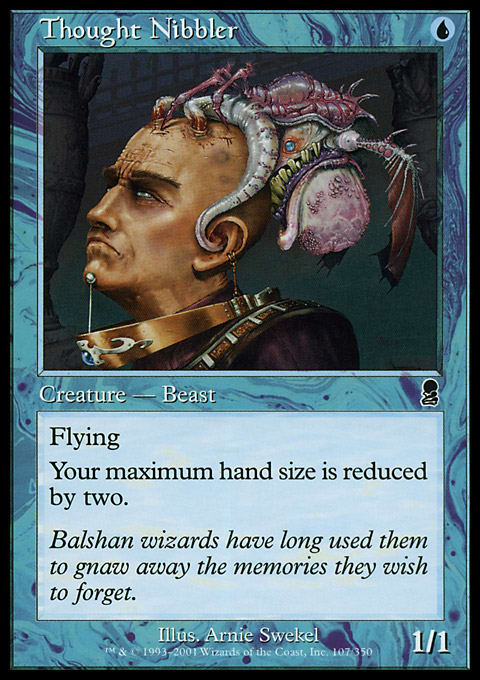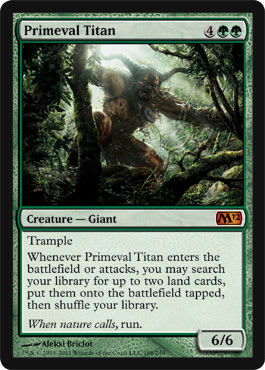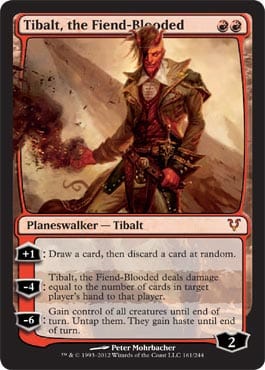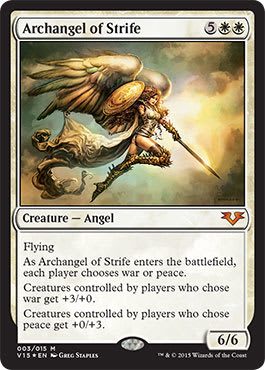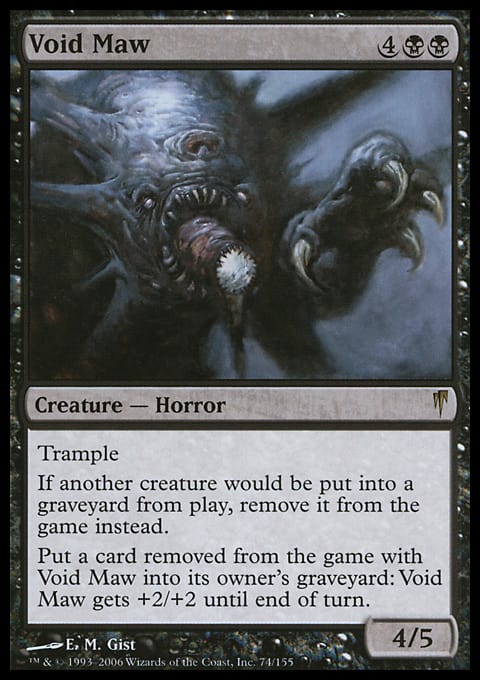Last week, I asked the Gathering Magic community to send in their house rules. Readers answered the call and via Twitter, Google Docs, and the comments section of the last post. The following list is a compendium of everyone’s responses.
Many of these house rules have undoubtedly evolved over the last twenty years of Magic history. It is probably impossible to trace back to the exact origin of any of them. However, whenever possible, I included players’ names and original sources. I have also grouped similar rules under subheadings for easy scanning.
It’s interesting to note that around 34% of the house rules our community uses deal with card-draw and mulligans. Seemingly all of us are trying to, in our unique ways, avoid mana-screw and empty hands. I wonder what the rules managers at Wizards of the Coast think of this. And what about R&D? Does it affect how they design cards? Who knows, but the info is here for them as well.
Most readers provided a rationale for their house rules. For the sake of space, I’ve included the rationale only if it seemed necessary in order to understand the rule.
Without further ado, here is The Gathering Magic Compendium of House Rules. Enjoy it. It’s yours.
Mulligan Rules
- The first mulligan is always free.
- All mulligans are free.
- If a player draws a hand with zero, one, six, or seven lands, he or she may reveal it and take a free mulligan. This can be done any number of times until a "normal" hand is drawn. Source: Moles
- Nulligan – Players may mulligan to the last-drawn hand size if all players agree to mulligan at the same time. For example, if Player A and Player B collectively decide to mulligan from seven, they both draw seven. After that, if only Player B decides to mulligan again, he goes to six while Player A stays at seven. Source: @nickmuse
- If needed, because of mana-screw or mana-flood, players may mulligan 7-7-6-7 until an acceptable hand is drawn. Source: @dude_1818
- Scry 3 – After a player has drawn his or her hand and finished mulligans, he or she may scry 3. Source: Lucas Campos. Scry 2 variant submitted by Blair Simpson.
Rules about Drawing Cards and Hand Sizes
- Land Grant – Before the game starts, players divide their decks into two piles, one containing all land cards and the other containing all nonland cards. Any time a player could draw a card, he or she may choose from which pile to draw.
- During each draw step, draw until you have seven cards. Put all lands into play. Source: @denveraltphoto
- Quick Draw – If a player has no cards in hand, on his or her next draw step, he or she may draw seven cards. Source: MTGSalvation
- Every player draws a card on his or her first turn, including the person who plays first. Source: Thomas Morgan
- Players begin the game with nine cards in their hands. For the remainder of the game, players may keep up to nine cards in their hands.
- Two up. Two down. – Players draw an extra card during each draw step. Players may play two land cards per turn. Source: Kendall Halman
- If a player has not drawn a land card for three turns, and if he or she only has one land in play, he or she may spend a turn to search his or her library for a land card, put it into play, then shuffle his or her hand into his or her library. Source: Chris de Hoog
Miscellaneous Rules
- No infinite combo decks.
- No turn-one kills.
- You must have more poison counters than your life total in order to lose by poison. Rationale: Poison counters are a lame way to speed up a game that can already be played out in as few as two to four turns. This forces decks to have a chance to actually play a few turns. Source: Anonymous Gathering Magic reader.
- When rolling two d10 for turn order, a roll of doubles may be rerolled at any time during the roll sequence.
- Any banned card is legal as long as it is announced prior to being in the deck and all parties agree. Rationale: Some banned cards are fun even without broken combos, and not all players have the cards to make the combos. This rule allows banned cards to see action without being too broken.
- No “color nuke” decks—decks designed to hose another color. Rationale: This is probably not necessary anymore. At one time, it was necessary due to the prevalence of Tsunami and Boil decks. Source: Joe Duncan
- Players must use decks with seventy-five or more cards. Rationale: Increased variety in the game.
- Once a player has won with a deck, that player cannot play that deck again for the rest of the night. Rationale: Increases variety and fights combo decks.
- Planeswalker Tutor – During a main phase, a player may pay the converted mana cost (CMC) of any planeswalker in his or her deck and roll a d6. If a 1 or 6 is rolled, that player may search his or her library for any planeswalker with a CMC that matches what was paid, reveal it, and put it into his or her hand. Rationale: See the previous post for a flavor-driven explanation. Source: @ALRstories
- Cumulative Planeswalker Tutor – Follows the same rules as the above Planeswalker Tutor house except that die rolls are cumulatively better with each roll. For example, the first time a tutor is attempted, only a roll of 1 would be successful. On the second attempt, rolls of 1 and 2 are successful. On the third attempt, rolls of 1, 2, and 3 are successful, and so on. Rationale: This adds flavor to the idea that players are calling across the Aether of the multiverse for the planeswalker to come to their aid. Each “call” (roll) is more likely to be “heard” (successful). Source: My good friend, Adam F.
- Formal sideboards are not necessary. Any card may be sideboarded in between games.
- Almost Tribal Wars – Formal Tribal Wars rules need not be followed to the letter if the spirit of the deck is consistent with the tribe. Example: Reassembling Skeleton may count as a Zombie card “in spirit.” Rationale: See the previous post.
- Only one Consecrated Sphinx may be on the battlefield at a time. Otherwise stated: Consecrated Sphinx is legendary without any of the benefits of being legendary—it may not be a commander, and it may not combo with cards like Time of Need. Source: Blair Simpson
Multiplayer-Specific Rules
- Players may only attack the players on their immediate right and immediate left. Source: A. Joseph
- Players may only attack one other player each turn. They may not attack the same player two turns in a row unless there are only two players left in the game. Source: Joe Scharphorn
- Players may only attack the player with the highest life total. Source: MrCGP and many others.
- Players are limited to do-overs or take-backs only if no other players are greatly affected and the turn has not progressed to the next phase. Source: Joe Duncan
- No take-backs after winning a multiplayer game. Rationale: To help the new players in our group learn to play, we allowed them to take back blatant mistakes and misplays. But once they won a multiplayer game, they lose that ability. It was sometimes jokingly referred to as "loosing noob status" for that player. Source: @Erik_Tiernan
- Roll a Die for Tables – Each player in a large playgroup rolls a d20. Players with high rolls are placed in one group, and players with low rolls are in another. The groups should have an even number of players in each. If there are enough players for more than two tables, the groups are adjusted while still grouping players based on the die roll. Rationale: This may not be a house rule technically, but I'm still submitting it. We had a variety of play-skill level and deck-building skills. To encourage weaker players to become better, the table selection was random. This also allowed us to avoid slow-playing eight- to twelve-man games by breaking down into smaller groups. When there was an odd situation, such as with nine players, the fifth player would be added to whichever group that player rolled closest to. For example, the low table rolled between 1 and 7. The high table was all above 15. The ninth player rolled a 10—he or she goes to low table for being closer to their numbers. Source: @Erik_Tiernan
- During Commander games: Players are allowed two free partial Paris mulligan rules. Source: @Erik_Tiernan
- During Commander games: Players are allowed to have one land in the command zone along with their Commander. If this land is destroyed or exiled, it may be placed in the command zone and recast—similar to commanders. Source: Cody Weaver
Emblem Rules
- Emblems are markers put into the command zone used to represent an object that has one or more abilities and no other characteristics. As they are in the command zone, they cannot be targeted, destroyed, or in any other way affected. See the official rules here, under section 113.
- A house rule with an emblem functions the same way. It’s the shorthand way of saying, “For this game, each player gets to play as if he or she has an untouchable ______ under his or her control.” Note that “emblems” created for house rules can be virtual or can be created via proxy.
- During Planechase games: Each player begins the game with a Fractured Powerstone emblem under his or her control. Source: @ALRstories, and my good friend Brad P.
- During multiplayer games: Each player begins the game with a Howling Mine emblem under his or her control. Source: @turnoneiona, Chris Romeo, MTGSalvation as “Double Draw,” and numerous others.
- During Commander games: Each player begins the game with a Sol Ring emblem under his or her control. Source: J3R3MY
Un-Rules
- If a player thinks of a song that fits the current game state, he or she must sing it immediately. For example: "Buried Alive. Buried Alive. Ah, ah, ah ah, Buried Aliiiiiiive!" Source: @MTGCannon
- If a player resolves two Void Maws, that player wins. Two people controlling Void Maws simultaneously results in a tie. Source:@Dysune
Whatever house rules you decide to create, adopt, or discard, I think the most important thing to remember is this: House rules exist to make the game more fun for you and your friends. If it stops being fun for you or someone in the group, discard the rule or adapt it until everyone is smiling again. Casual Magic works best when everyone involved has the happiness of the other players in mind above their own.

















